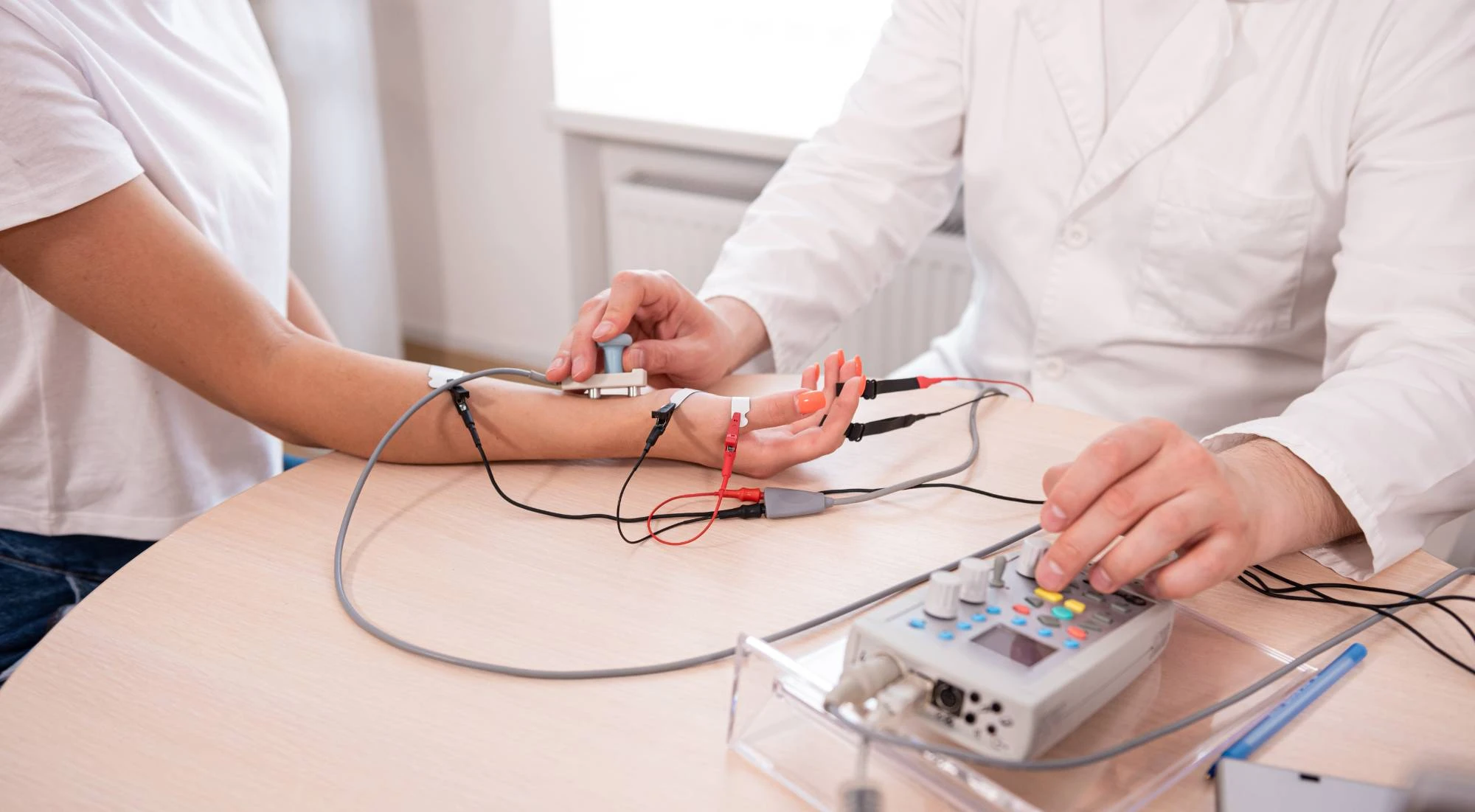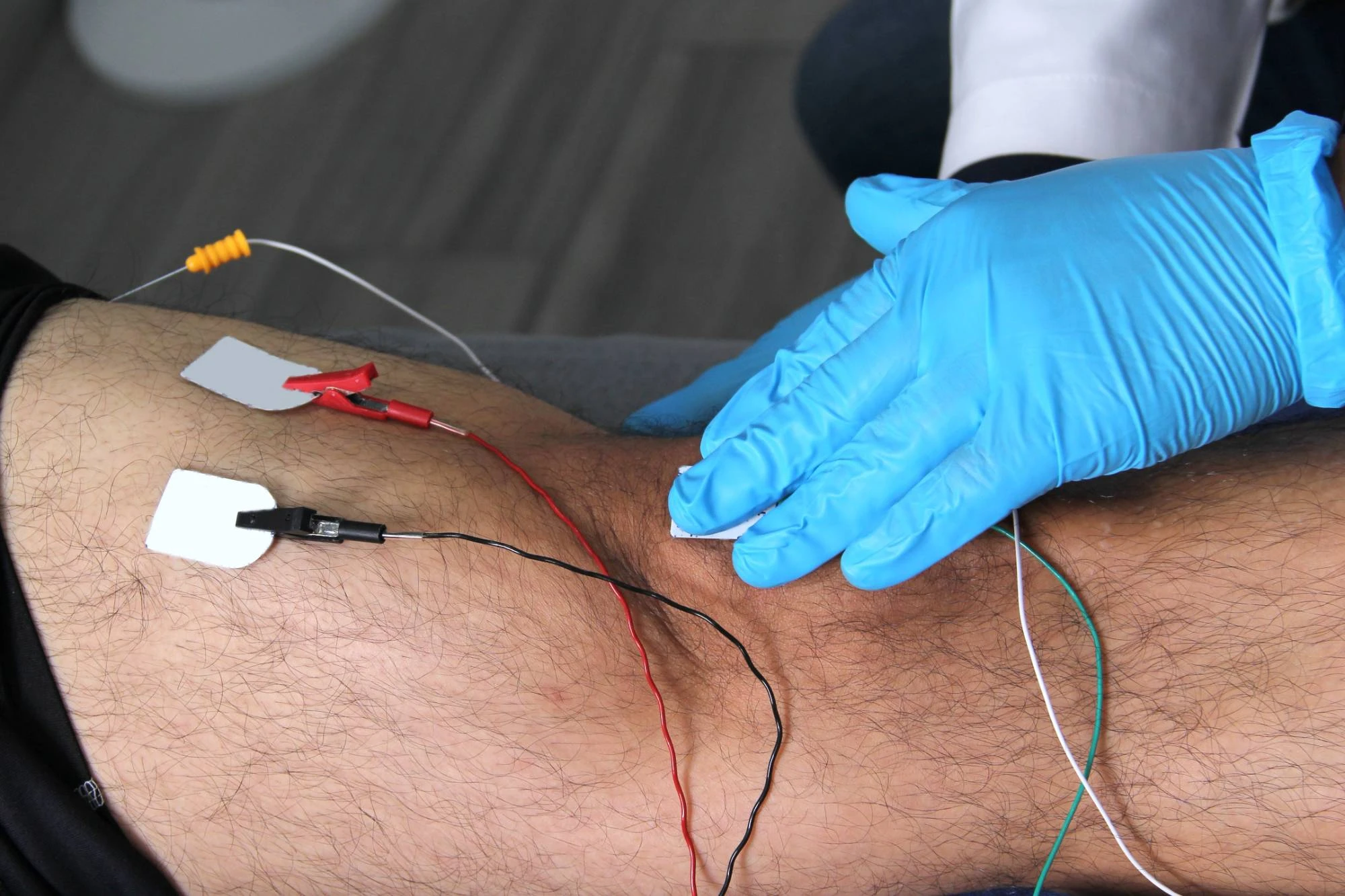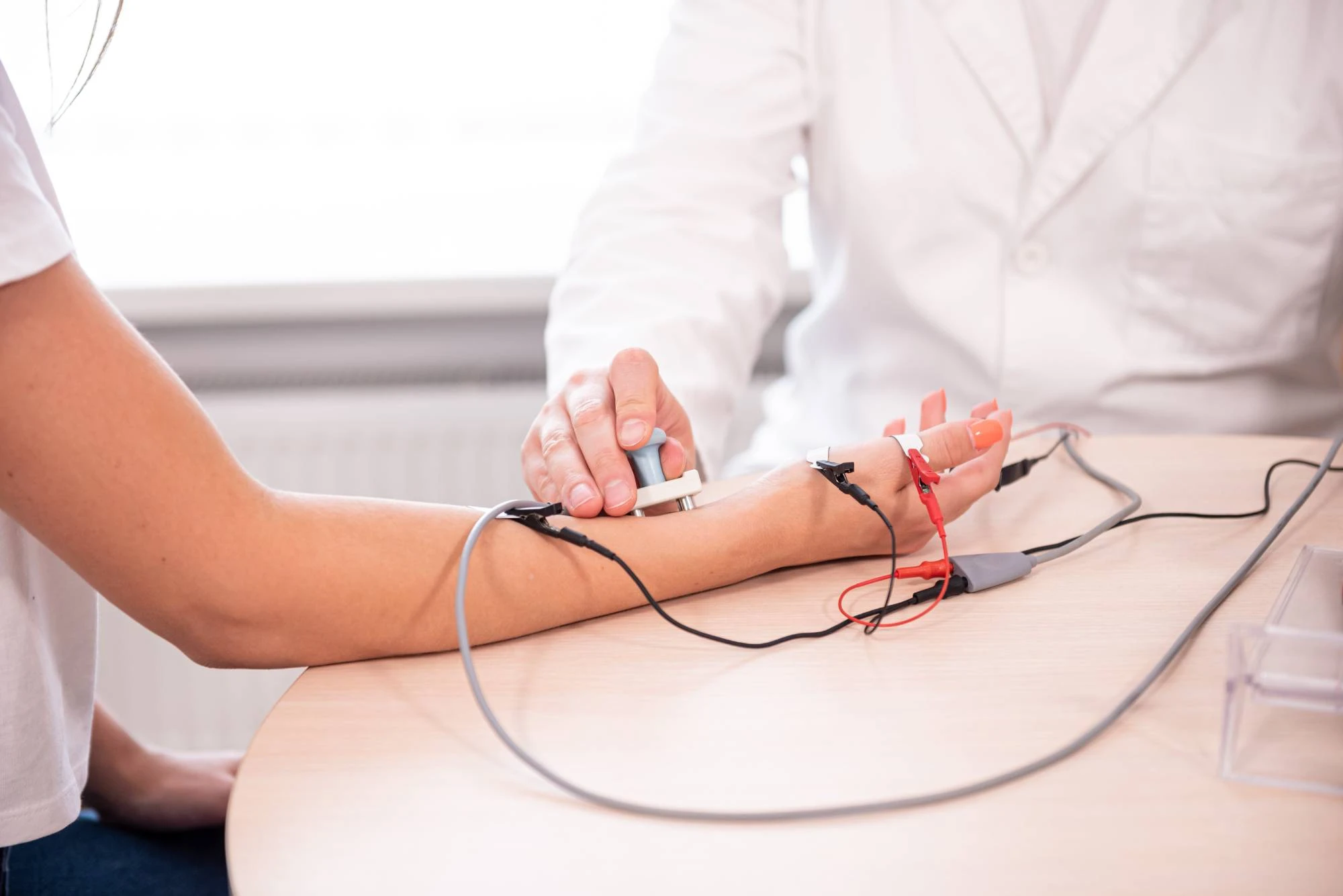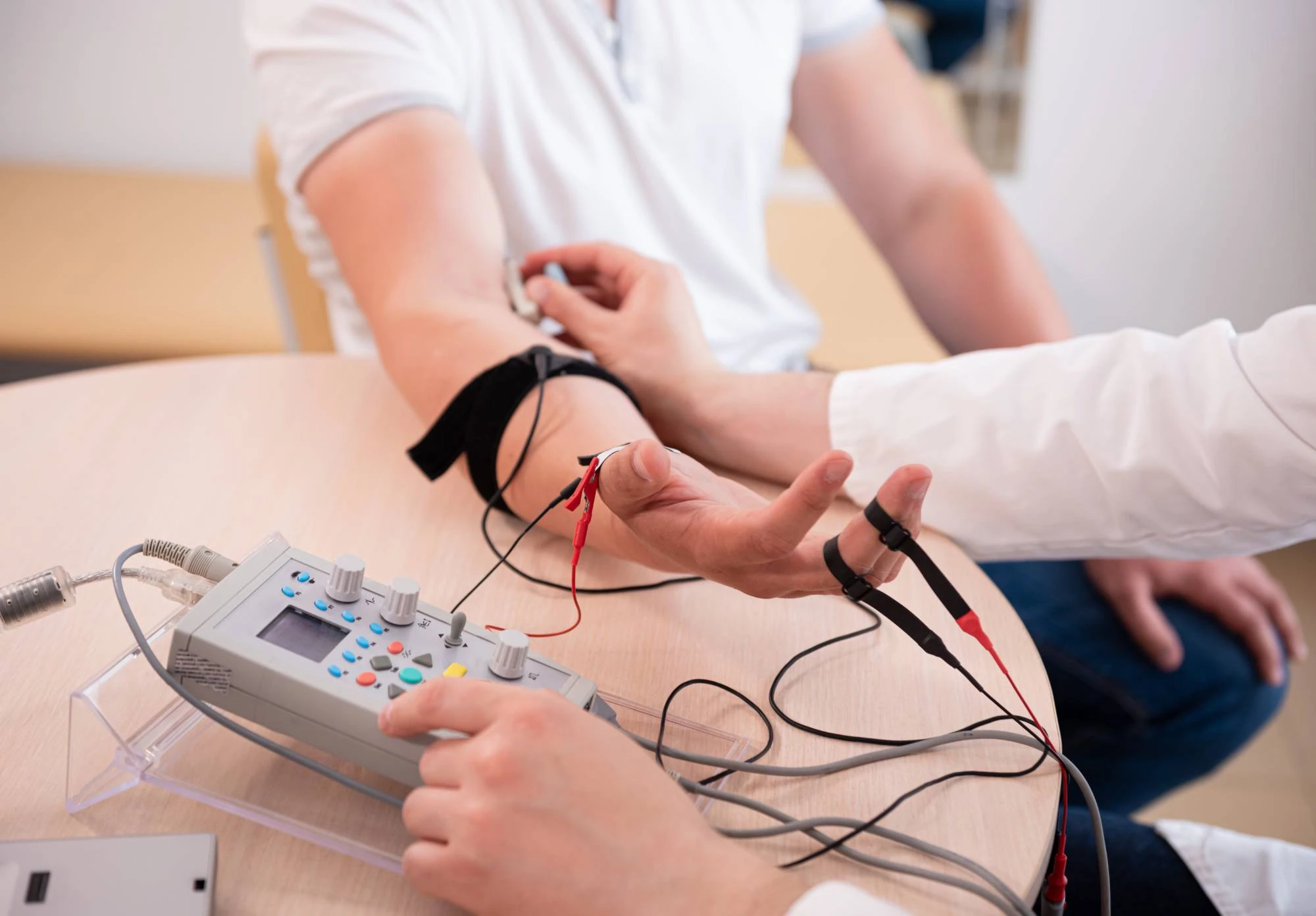Advanced electromyography testing that pinpoints exactly what’s causing your symptoms, so you can move forward with confidence.

Reviews

You’ve been dealing with numbness, tingling, or muscle weakness for too long. Maybe your fingers go numb at night, or your leg feels weak when you walk. Perhaps you’re dropping things more often, or that burning sensation in your arm just won’t go away.
EMG testing gives you concrete answers. Instead of wondering what’s happening to your body, you’ll know exactly which nerves or muscles aren’t working properly. This isn’t about managing mystery symptoms anymore—it’s about understanding your condition so you can treat it effectively.
When you have a clear diagnosis, everything changes. Your doctor can create a targeted treatment plan. You can explain to family members what’s actually happening. Most importantly, you can stop worrying about the unknown and start focusing on getting better.
NY Spine Medicine has been serving patients throughout New Jersey with advanced diagnostic testing for years. We understand that when you’re dealing with nerve or muscle problems, you need answers—not more questions.
Our physicians specialize in spine and nerve conditions. We’ve performed thousands of EMG tests and know how to get accurate results while keeping you as comfortable as possible. This isn’t our side service—it’s what we do every day.
Located conveniently in Connecticut Farms, NJ, we work closely with referring physicians throughout the area to ensure your care is coordinated and comprehensive.

Your EMG test actually involves two parts: nerve conduction studies and electromyography. The nerve conduction study comes first, where small electrical pulses test how well your nerves send signals. You’ll feel brief, mild shocks—most people describe it as similar to static electricity.
Next is the electromyography portion, where thin needle electrodes are inserted into specific muscles to measure electrical activity. The needles are much thinner than those used for blood draws. You might feel a brief pinch when they go in, but most patients tolerate this part well.
The entire process usually takes 30 to 60 minutes, depending on how many nerves and muscles need testing. You can return to normal activities immediately afterward. Results are typically available within a few days, and your physician will explain exactly what the findings mean for your treatment options.

Ready to get started?
EMG testing at NY Spine Medicine covers the full range of nerve and muscle diagnostic needs. Whether you’re dealing with suspected carpal tunnel syndrome, pinched nerves in your spine, muscle weakness, or unexplained numbness, our testing can identify the specific problem.
We use advanced electromyography equipment that provides precise measurements while minimizing discomfort. Each test is customized based on your symptoms and your referring physician’s concerns. This isn’t a one-size-fits-all approach—it’s targeted testing designed to answer your specific questions.
Connecticut Farms area patients appreciate our thorough approach. You’re not rushed through the process, and our staff takes time to explain what’s happening during each step. Our goal is accurate diagnosis combined with clear communication about what the results mean for your next steps.

New York:
Florida:
Support